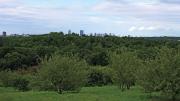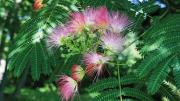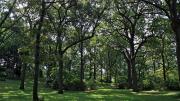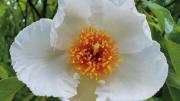With 281 acres of thriving trees, flowers, and bushes from around the globe, Harvard’s Arnold Arboretum is so much more than a walk in the park.
The historic oasis was designed by Frederick Law Olmsted as part of Boston’s Emerald Necklace, and today still serves as the timeless refuge he envisioned. “Olmsted knew a thing or two about pandemics,” says arboretum director and Arnold professor of organismic and evolutionary biology William “Ned” Friedman. “This was supposed to be a place in the city where, free of charge—going back to Olmsted’s great commitment to democracy and access—anyone could come and be uplifted, freed from the stress of urban life, and transported to a deep connection with nature. It was, and is, a modern design.”
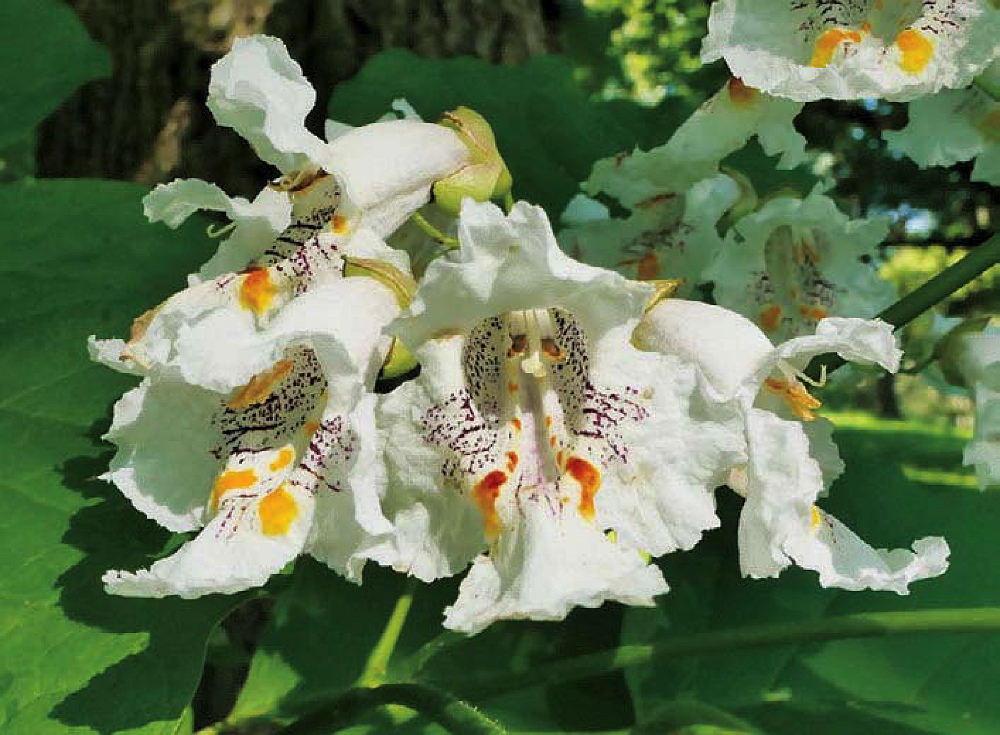
Catalpa x erubescens ‘J.C. Teas’ (hybrid catalpa)
Photograph by William Friedman/courtesy of the Arnold Arboretum
With social-distancing safety measures built in (partly thanks to its wide, still intact, nineteenth-century carriage roads), the arboretum stayed open through the early days of the COVID-19 pandemic, even as Greater Boston’s many cultural institutions were forced to shut their doors. As Friedman puts it, “We are here right in the middle of Boston, a pristine place, where you are walking on Olmsted’s canvas.” For thousands of visitors, the meandering pathways and botanical gardens have provided a critical restorative experience—as Friedman, assistant professor of exposure assessment science Joseph G. Allen, and professor of epidemiology Marc Lipsitch wrote in an April 13 Washington Post opinion essay, “Keep Parks Open. The Benefits of Fresh Air Outweigh the Risks of Infection.” The trio cited scientific studies, common sense, and Olmsted himself (“change of air, and change of habits, is favorable to health and vigor”), and pushed people to mask up, stay apart, and get outside.
This summer, that invitation remains wide open. While fully acknowledging the tragic aspects of the pandemic, Friedman extolled this season of Greater Boston staycations and backyard adventures as an “extraordinary opportunity to renew peoples’ connection to nature and focus on personal health and well-being.”
In late May, he reported that arboretum staff had gotten hundreds of new plants in the ground, and were continuing the usual care of all its extensive botanical gardens and tree specimens. The artful landscape’s living collection (including nursery holdings) comprises more than 17,000 individual plants, and plenty of quiet corners to explore. This summer, head to Hemlock Hill for the shady groves of more than 200 species of conifers—larches, spruce, pines, and firs among them. Seek out the garden’s oldest cultivated plant, the Buckleya distichophylla (piratebush), or just breathe in that scrubbed pine scent. Friedman’s year-round botanical photographs are viewable on “Posts from the Collection,” www.arboretum.harvard.edu/category/directors-blog (and Flickr and Instagram), and in May he highlighted young seed cones of several spruce species: “the conifer equivalent of magnolias—showstoppers at peak color on a sunny day.”
While on Hemlock Hill, stroll the pathways through Rhododendron Dell. The historic giant mounds of hybrid and evergreen bushes flower in May and June, but their summertime forms are still an inspiring testament to enduring resilience.
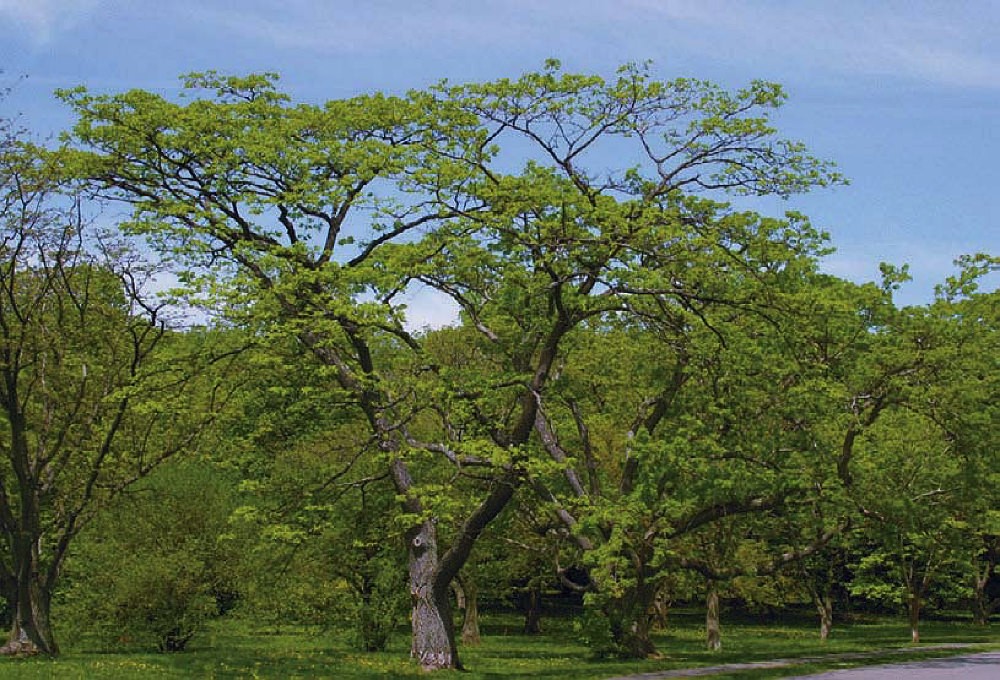
View of the arboretum's cork-tree collection
Photograph by Karen Madsen/Courtesy of the Arnold Arboretum
Ascend the adjacent Peters Hill for views of the Boston skyline, and then check out the arboretum’s heralded collection of crabapple trees. More than 500 plants represent the arboretum’s traditional role in the research and promulgation of species and cultivars. Learn about the best trees for New England’s backyard micro-climates, and the incredible diversity of fruits. The road encircling the hill offers a relaxing jaunt among hawthorns, oaks, and honey locusts.
There’s always something interesting growing or blooming on the grounds of Weld Hill. The “cosmopolitan urban meadow” is packed with native and non-native perennials including late bloomers such as black-eyed Susan, chicory, and yarrow, providing both visual beauty and productive habitats for a variety of pollinators and other creatures. Buzzing bees might be part of the arboretum’s efforts to attract and bolster regional species of this important ecological contributor. “There are more than 100 species of bees native to this area,” Friedman points out, “and we are trying to create habitats. With our new solar installation, the largest Harvard has ever done, we are planning a native meadowland and plantings from locally collected seeds, as ways our collection can support biodiversity.” Through another project, aimed at increasing and protecting bird populations, especially chickadees, swallows, and owls, 31 nest boxes are scattered throughout the grounds. In this COVID-19 summer, such missions seem to extend also to human beings in need of nature.
